Build Quality
As we already know the MSI A850GF features a 140mm fan design that is used in the same vein as 120mm fans in that these can provide for quiet cooling environments due to the ability to move a larger volume of air at slower speeds than a smaller diameter fan.
The 140mm fan is just about the largest diameter fan we are likely to see in ATX power supplies given the physical constraints of the form factor. While great for quiet computing environments the key criteria in our evaluation is whether or not the cooling solution is sufficient, not necessarily its sound output level or form factor, although we certainly listen for offending units.
External Build Quality
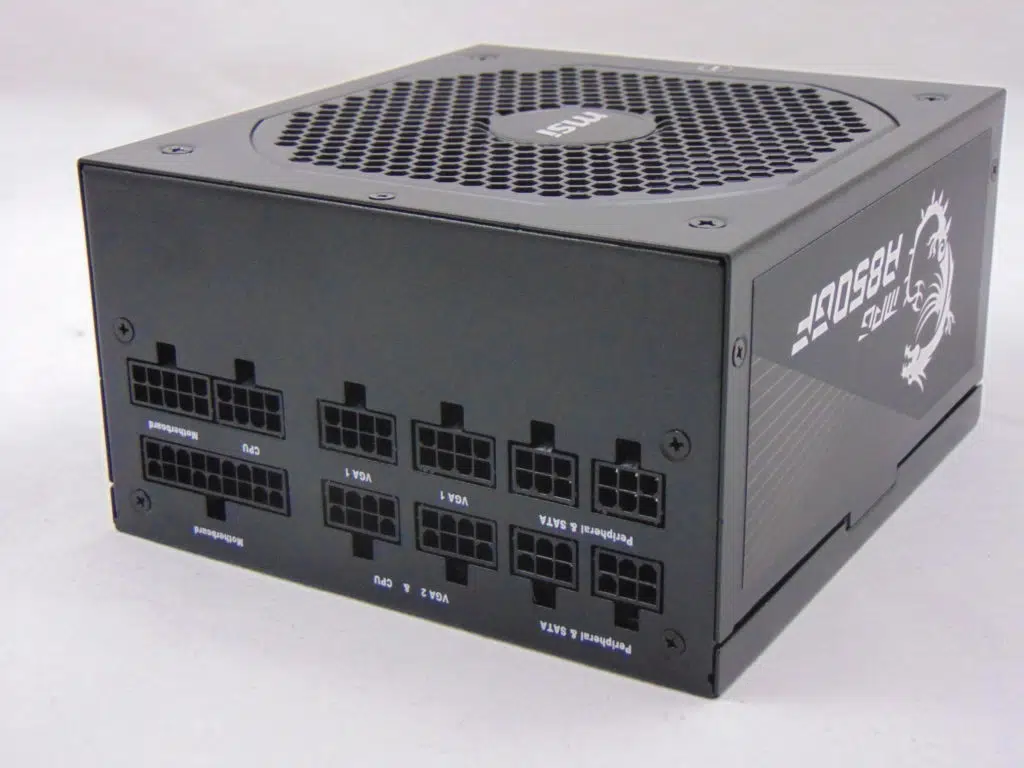
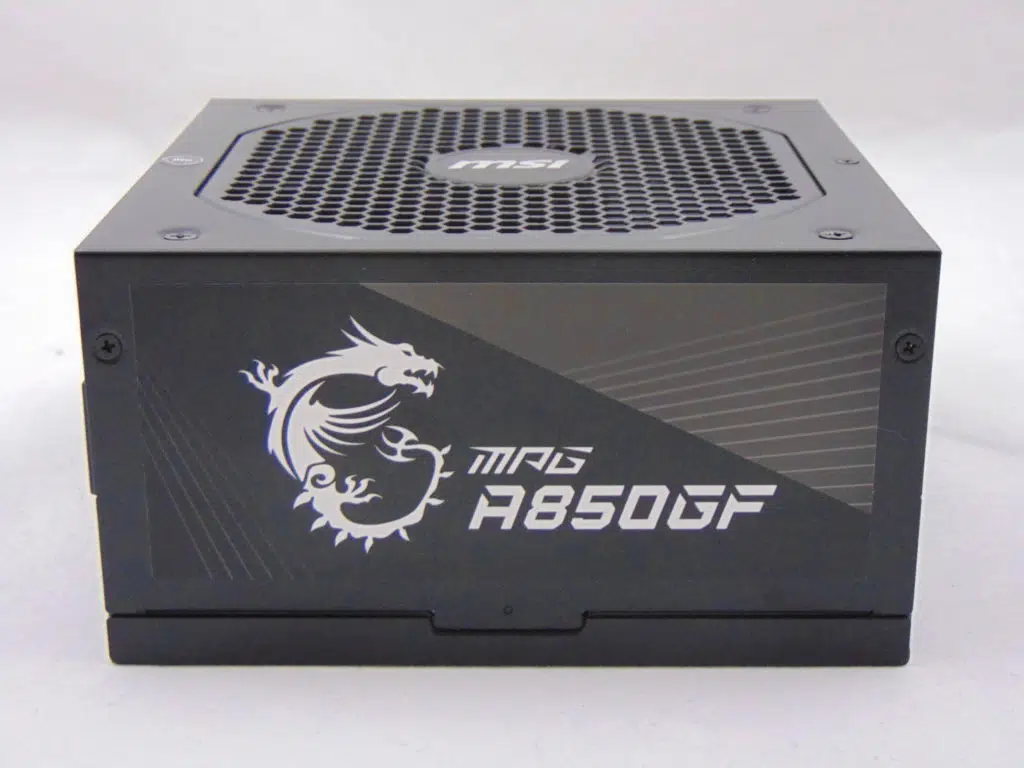

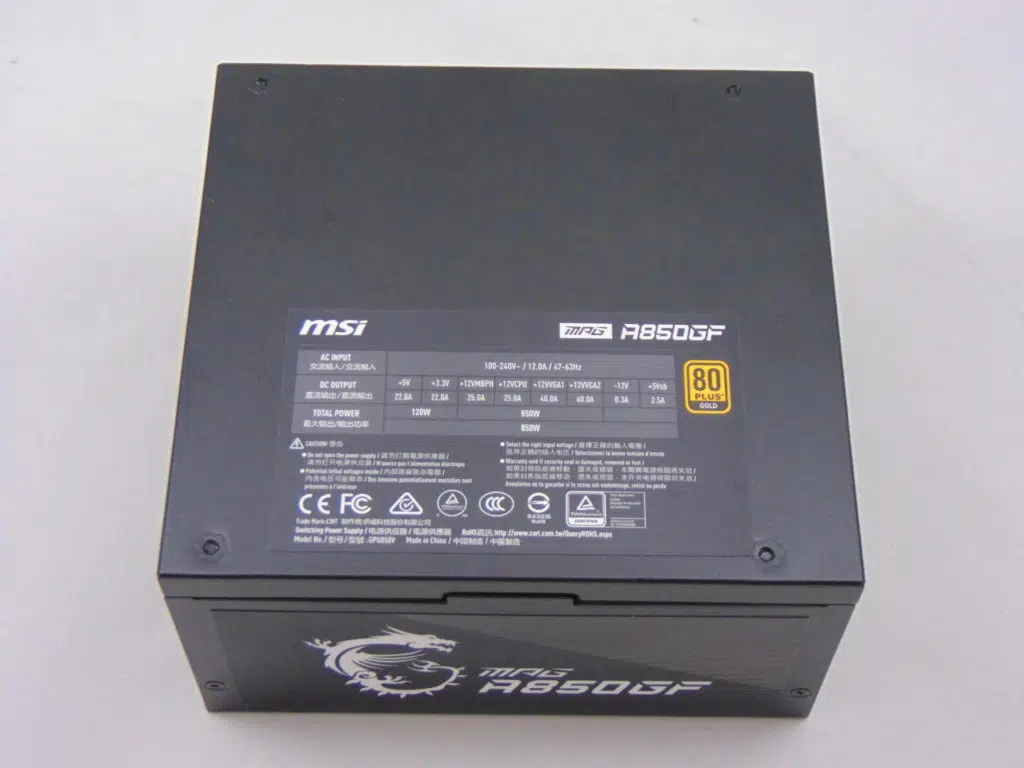
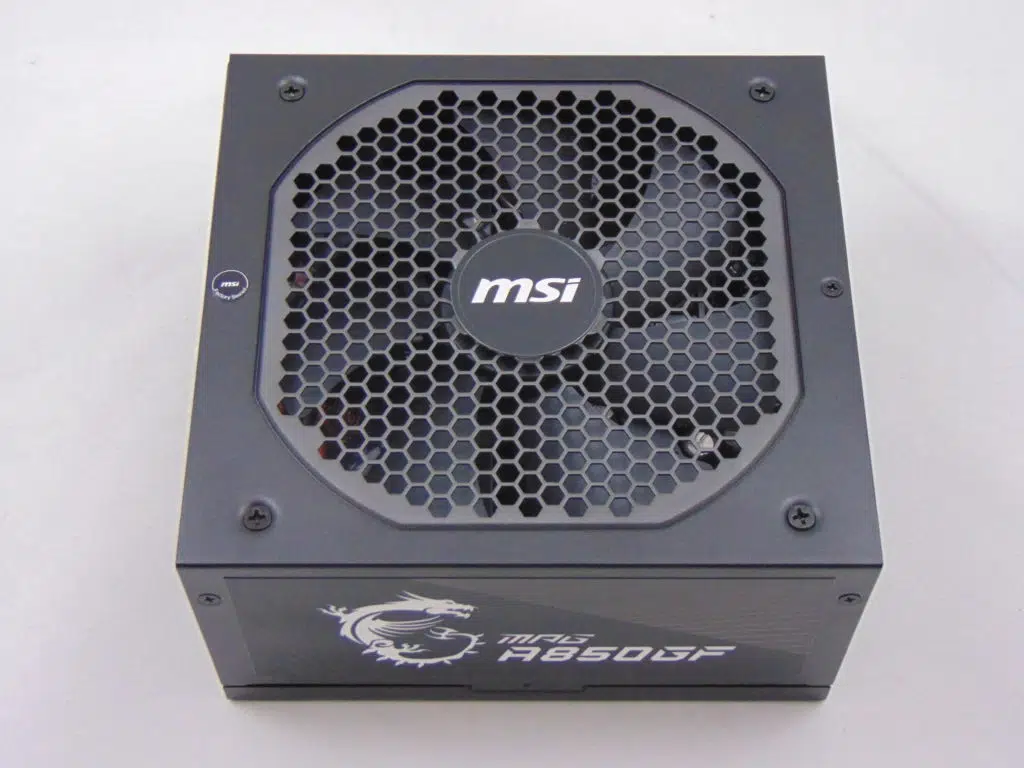
The external build of the MSI A850GF looks a lot like other CWT-built units on this platform such as the Enermax REVOLUTION DF 850W. However, the stickers here today carry the MSI MPG branding to represent this unit. Other than that, this unit conforms to much of what has become standard among enthusiast power supplies over the last 10 (oh, god…….its almost 15 years now……..someone shoot me!) years, or so, with the layout of a single overhead fan design with APFC and modular cables. The finish we see today is a textured flat black finish that should be durable.
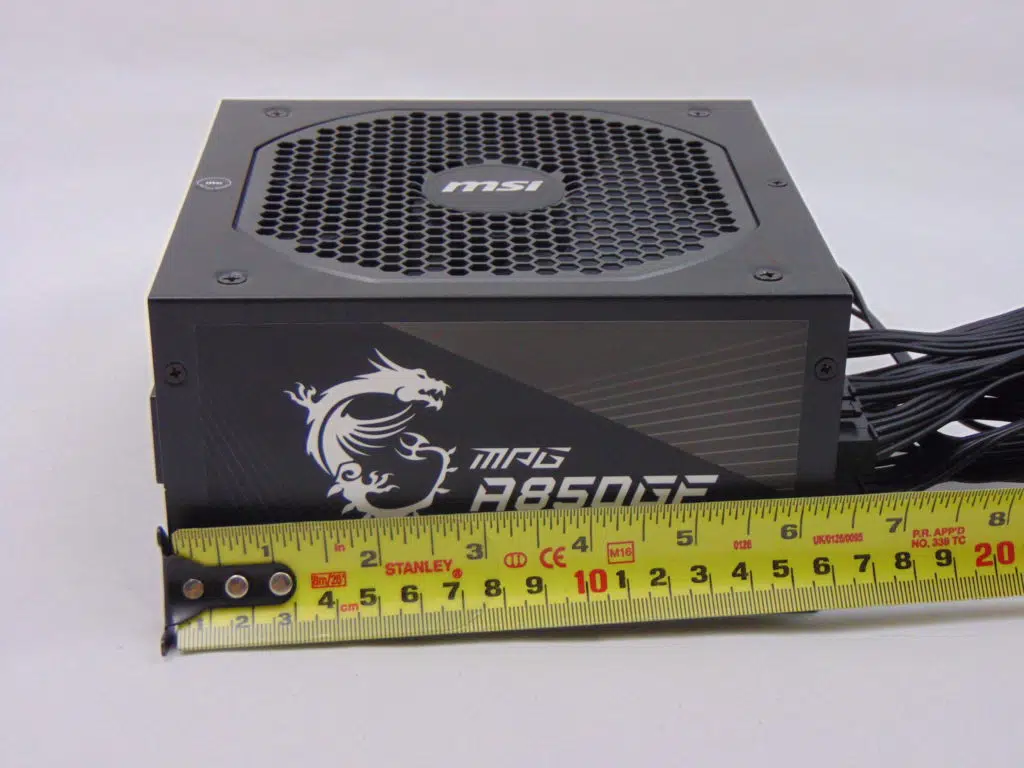

The MSI A850GF comes in at a total length of ~6 1/4 inches while the cables come in at a length of ~18″ to 28″ to the first or only connector. Additionally, the cables are all the FlexForce style cables. They are built for reducing cable clutter and cable management.
Internal Build Quality
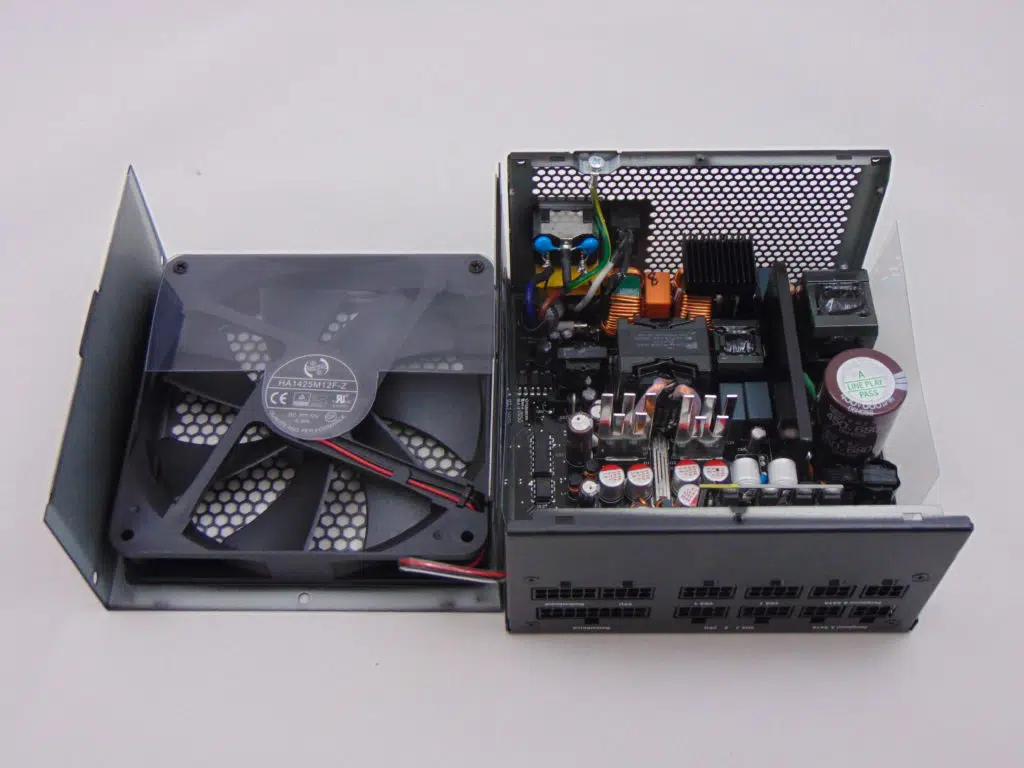
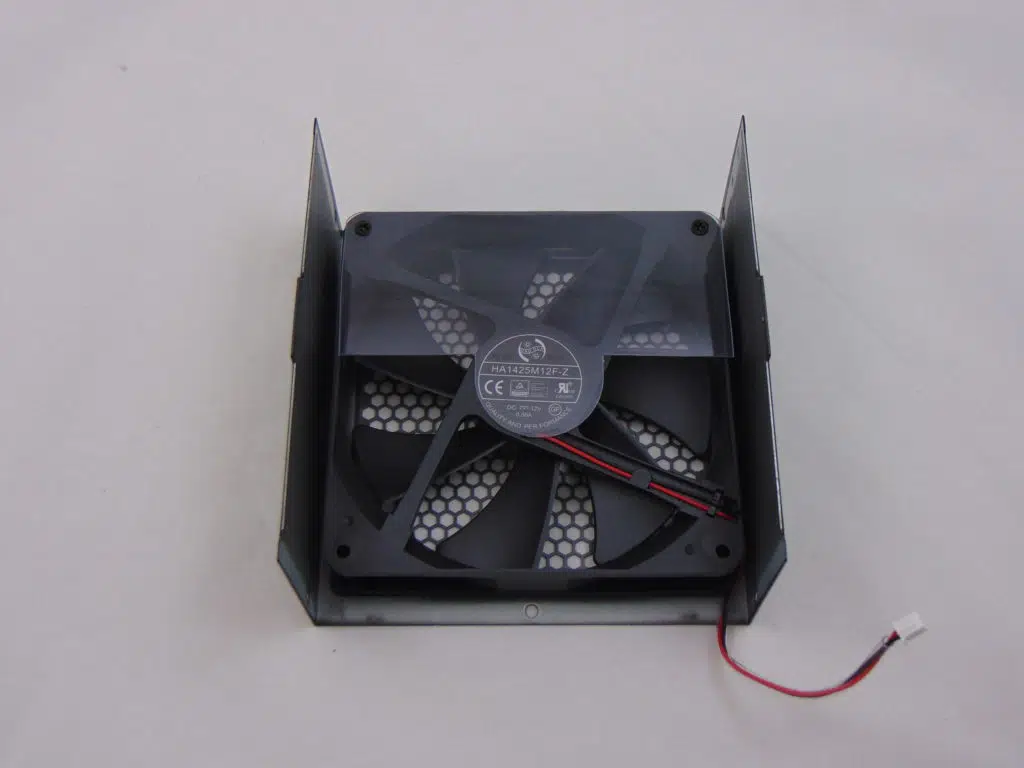

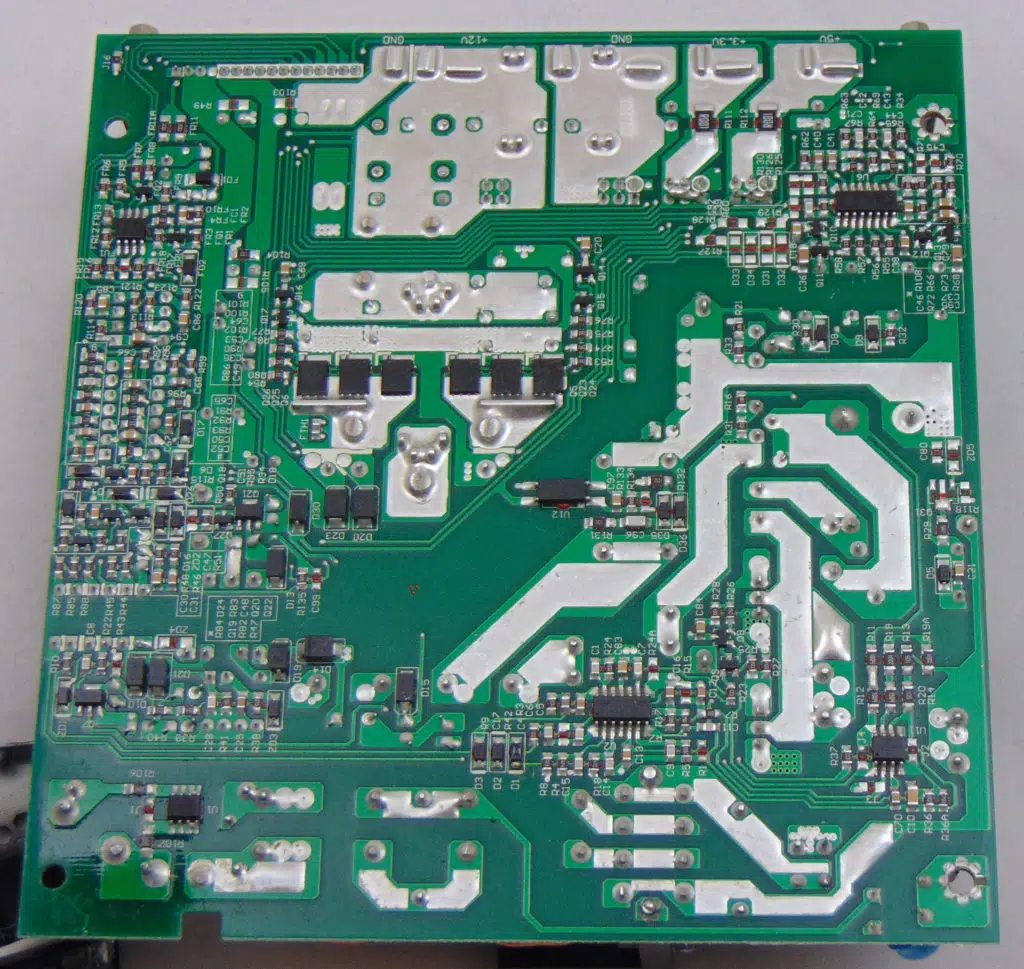
Once we open the top of the MSI A 850GF we see the same CWT GPU platform that we saw under the hood of the Enermax REVOLUTION DF 850W (and this, not a bad thing). As such, it is once again sparse and features a half-bridge resonant LLC primary and a secondary where we have synchronous rectification with DC-DC VRMs for the minor rails.
The heatsink layout features what appear to be just four heatsinks (two larger black ones on the primary side and two smaller bare aluminum ones on the secondary side) installed today. These heatsinks are paired with a 140mm Hong Hua FDB rated at 0.36A at 12v. When we look at the back of the PCB, we see the 12v MOSFETs here. The soldering here is outstanding.


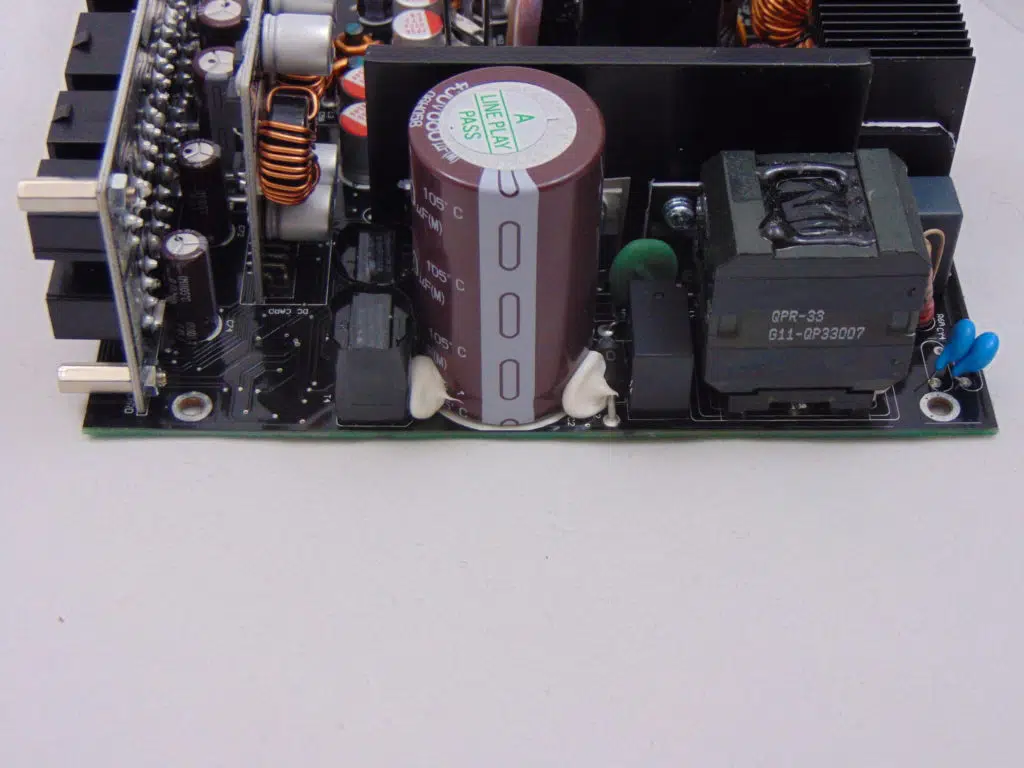

On the primary side, the A850GF input filtering begins upon the housing itself with some X capacitors and Y capacitors and then trails onto the main PCB. The bridge rectifier is next and it is attached to a fairly large heatsink. As we move on to the primary side proper, we find a coil followed by the APFC power components and the main switchers on a heatsink. Next to this heatsink is the main input capacitor which is provided by Nippon Chemi-con. This capacitor is rated at 450v 680uF 105C.



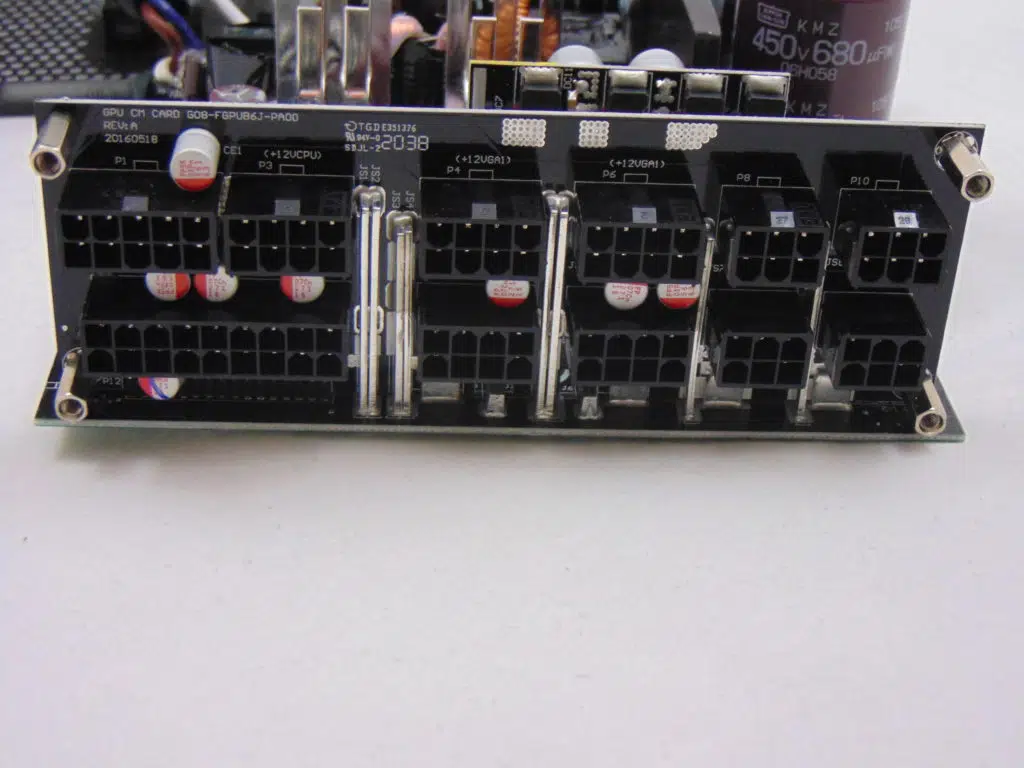
On the secondary side of this unit, things continue to be very sparse today as is the case with this CWT design. In this area, we find that the main transformer is rather centrally located by a pair of heatsinks. These heatsinks are used by the MOSFETs we saw on the rear of the PCB. Behind this we find the DC-DC VRMs housed on their own PCB (populated by Nippon Chemi-con solid capacitors) up against the modular PCB. In front of these PCBs, we find a number of standard electrolytics provided by Nippon Chemi-con and solid capacitors provided by Nippon Chemi-con. Moving on to the modular PCB, we see that the PCB construction looks very nice and there are FPCAP solid capacitors here.
Build Quality Summary
Today’s MSI A850GF is the first power supply we have seen from MSI and at 850W it is right in the meat of the enthusiast realm. Things seem to be starting off on the right foot as this unit is looking like a very well-built product just like the last time we saw this design. The exterior of this unit is generally well built and it looks like most modular overhead fan units these days. However, the branding this unit carries is a bit on the lower end of the spectrum given that it is done via stickers. This is coupled with all FlexForce style cabling which is nice to see. It has alloy copper terminals.
When we move to the interior build quality, we see a modern design that is generally well-executed even though it is very sparse looking for an 850W unit. The integration is very well done (especially the soldering). The component selection is excellent as we see Nippon Chemi-con standard capacitors as well as FPCAP and Nippon Chemicon solid capacitors today. We also saw a Hong Hua FDB fan which is another solid addition to the build quality. With this all looking very sorted out to start with, let’s move on now to the load tests and see how this unit does there!
